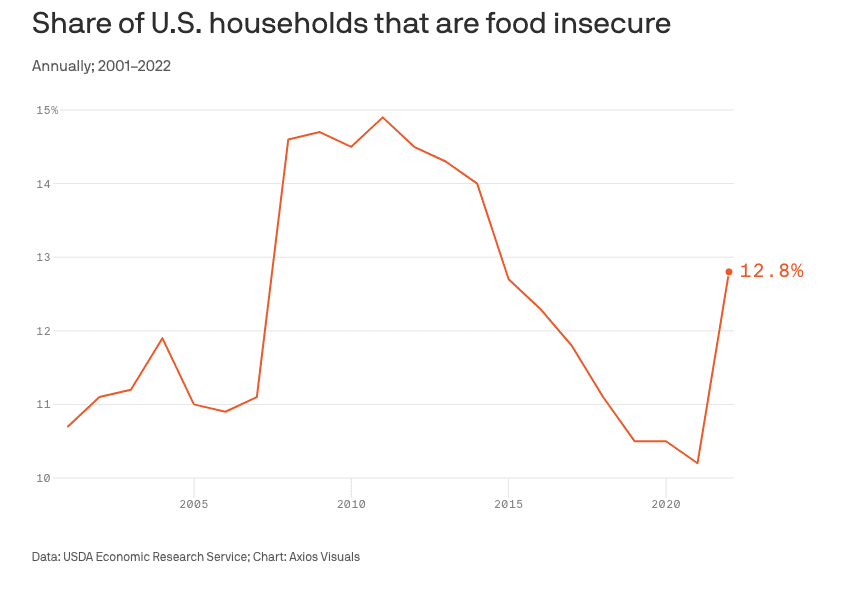
The number of Americans who were food insecure — meaning they couldn’t reliably afford to eat — soared last year, according to new government data.
Why it matters: The economy might’ve looked great in 2022 by some metrics, like the low unemployment rate, but not this one.
- Food insecurity spiked to a level not seen since the U.S. economy was slowly recovering from the financial crisis.
- Historic inflation rates and the disappearance of pandemic-era benefits hammered vulnerable Americans last year.
Zoom in: The share of households that couldn’t reliably afford food rose to 12.8% from 10.2%, according to the report released by the U.S. Department of Agriculture’s economic research service.
- Food insecurity, per the USDA’s definition, means that at times during the year, a given household was unable to acquire an adequate amount of food for one or more of its members because they didn’t have enough money or resources.
- It can mean households rely on a few very basic foods and reduce variety in their diets. Those with “very low” food security […]











